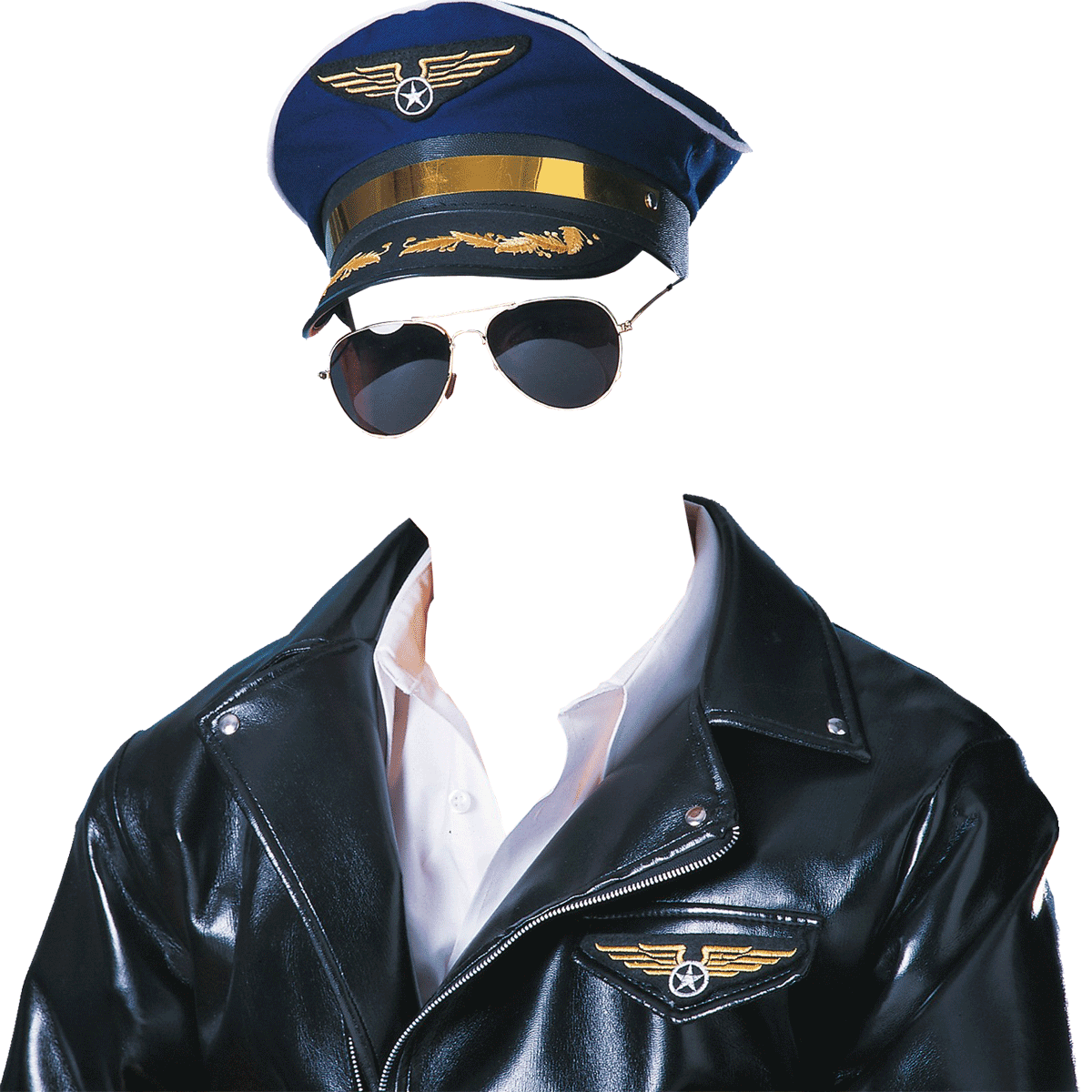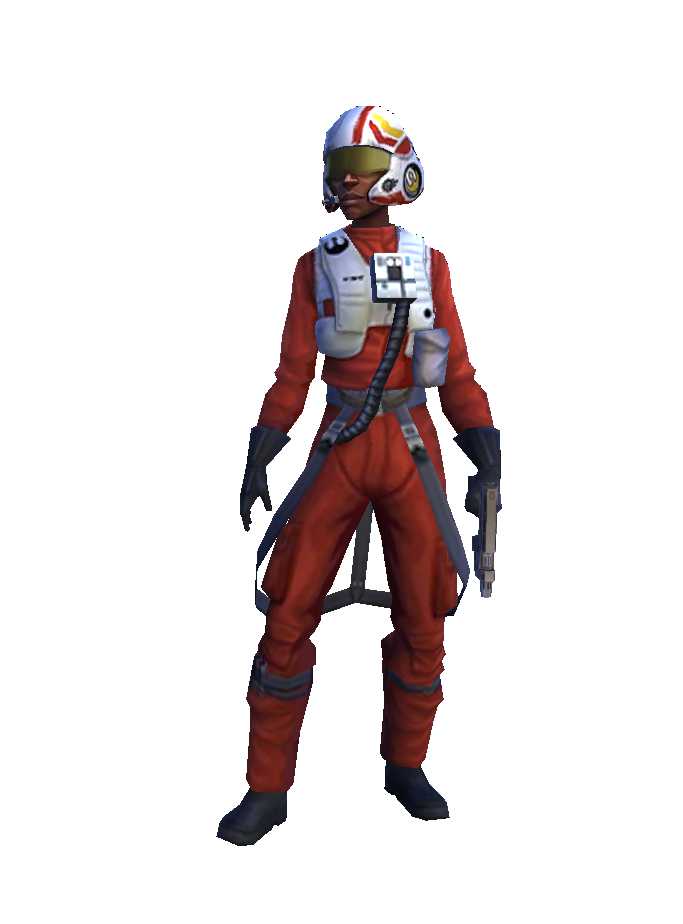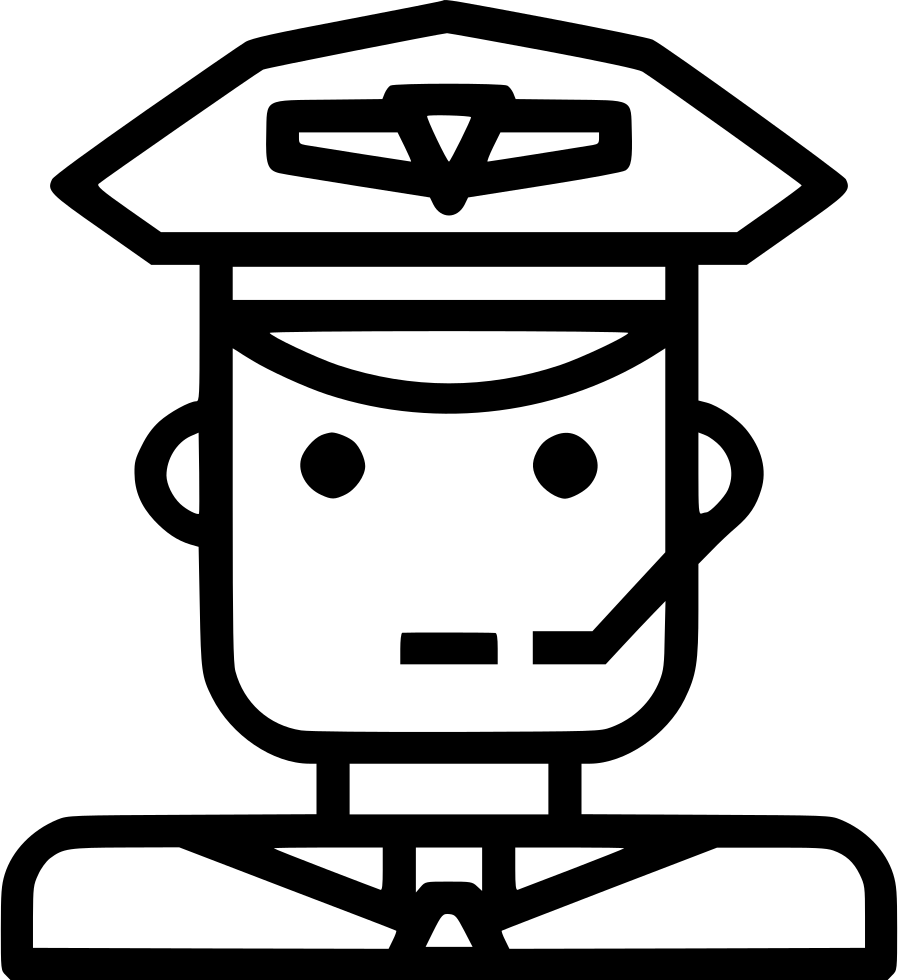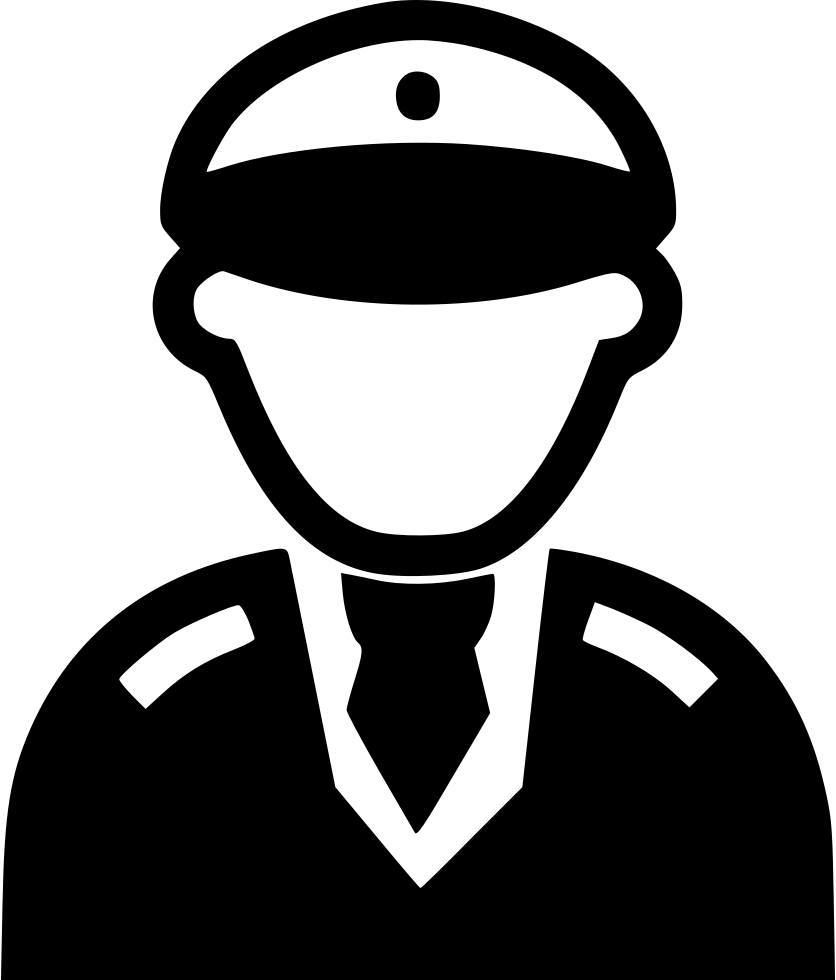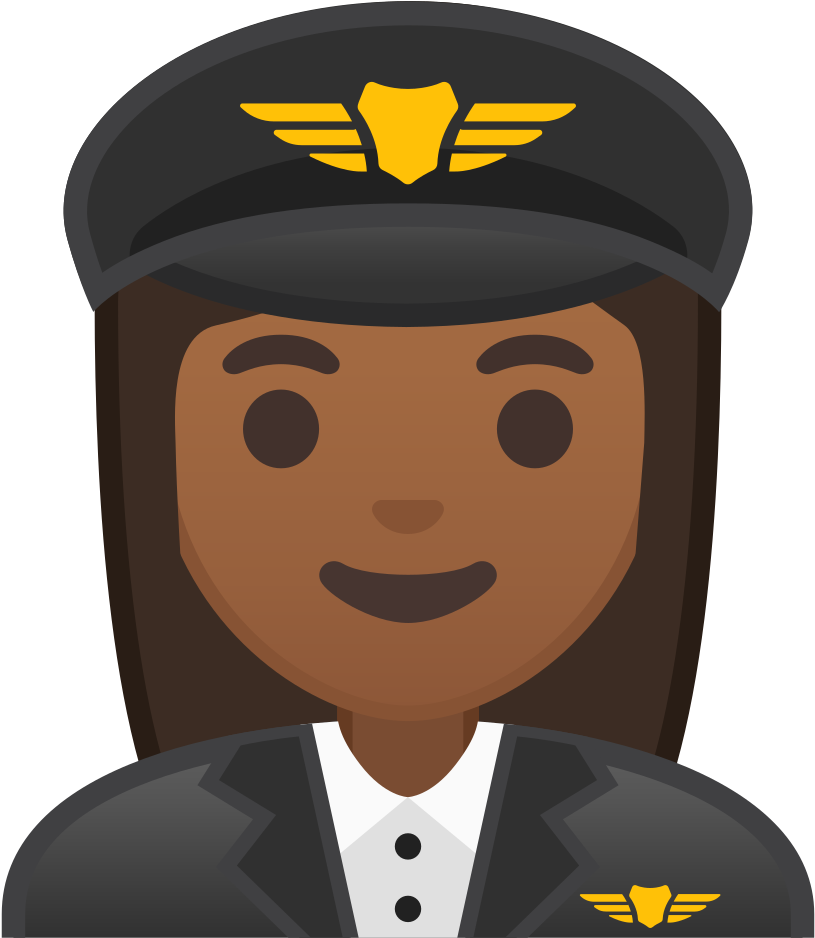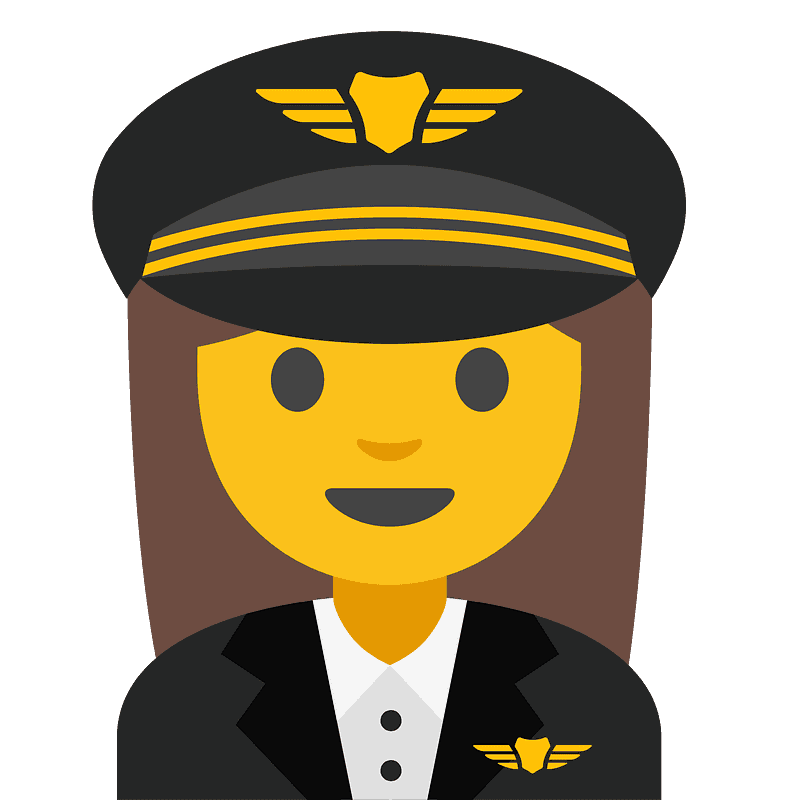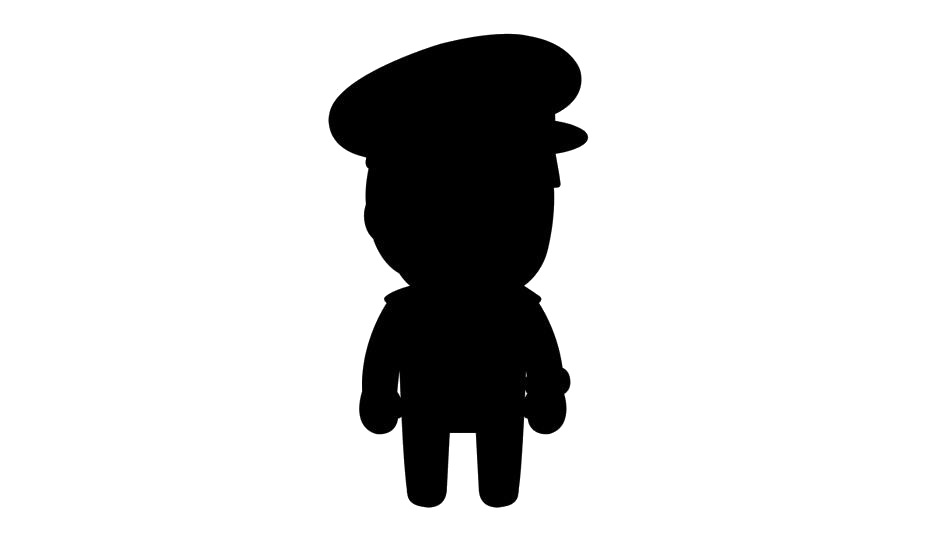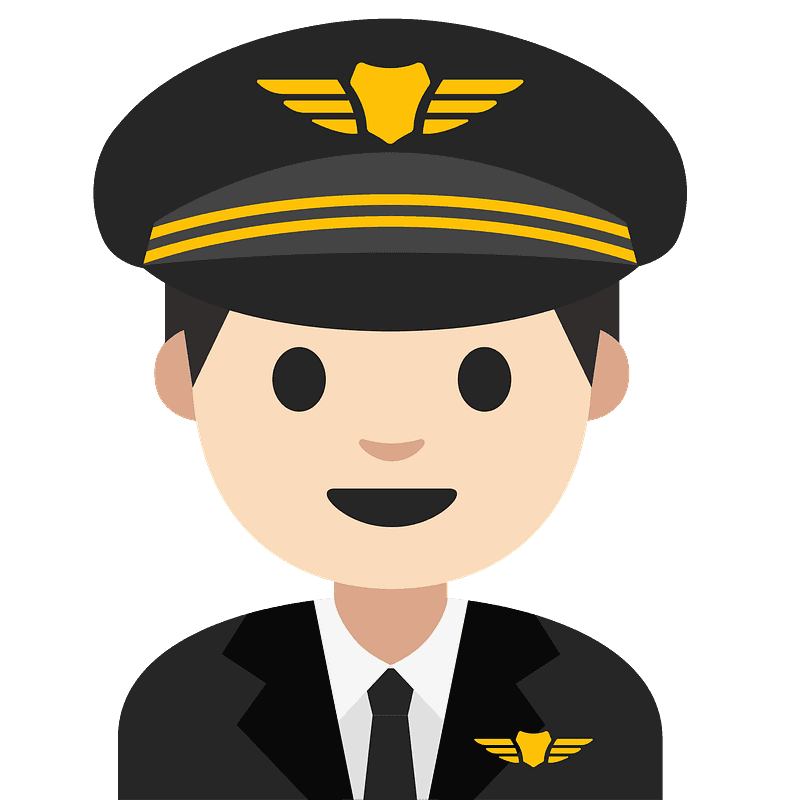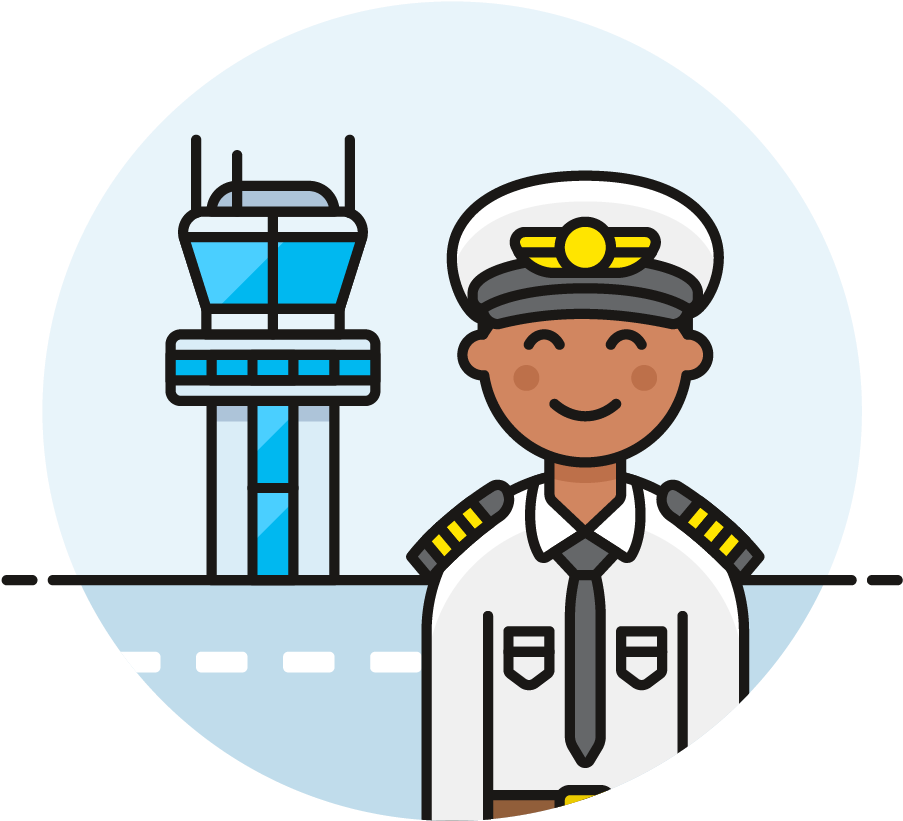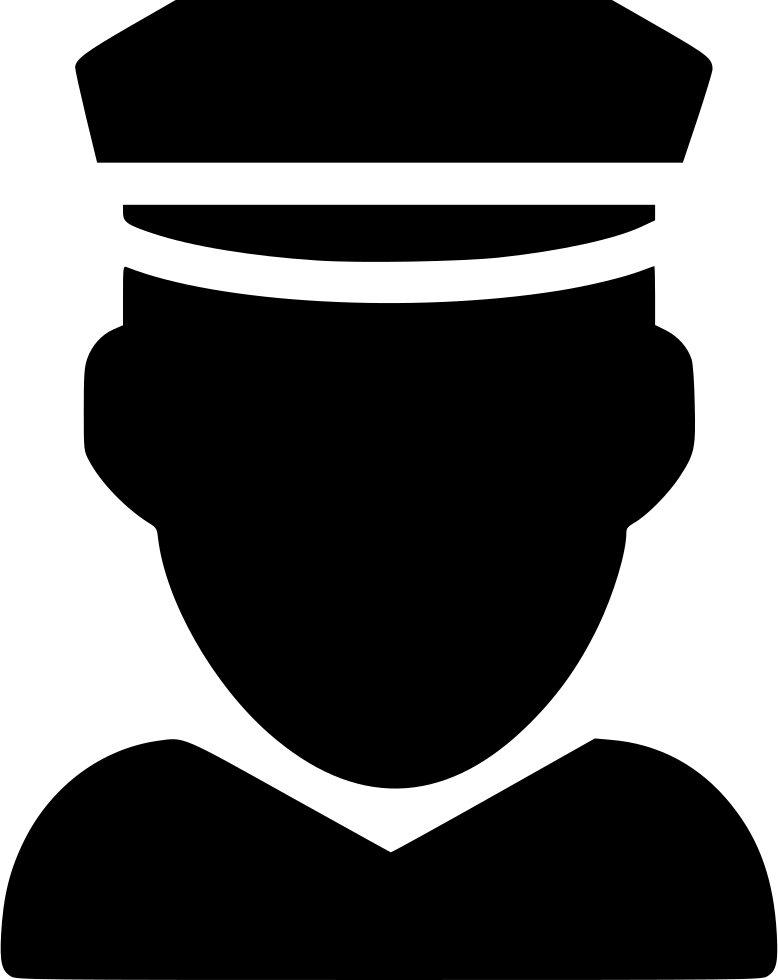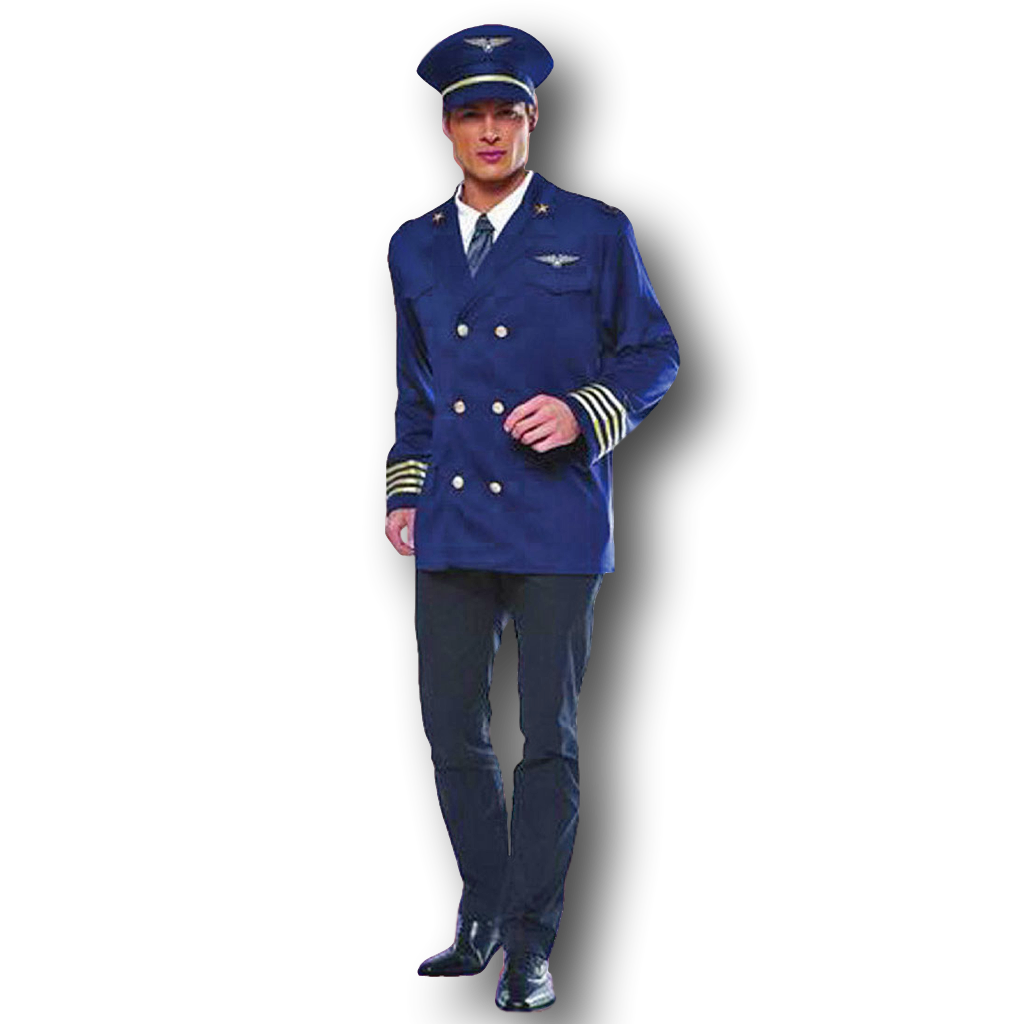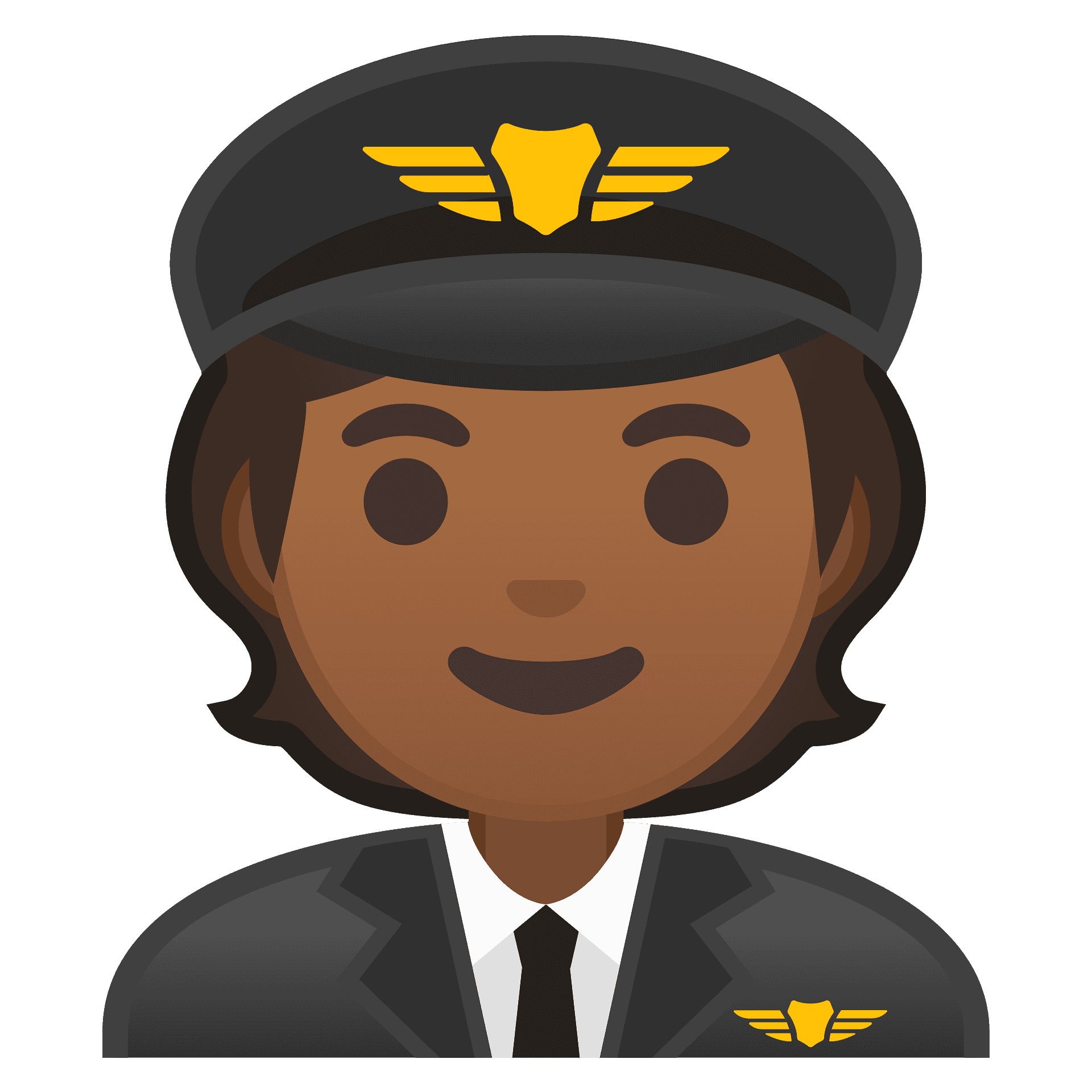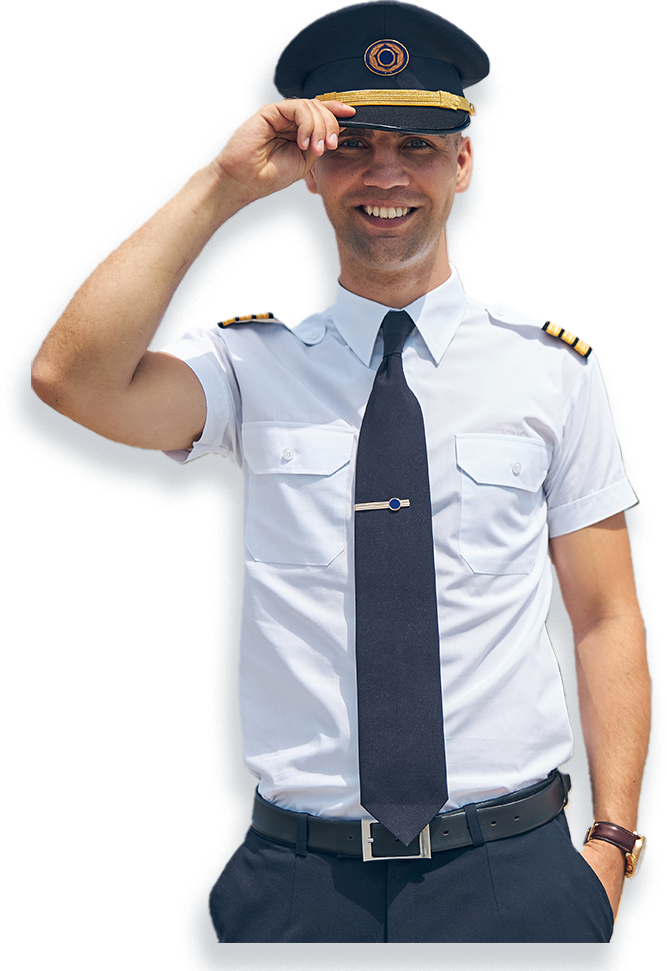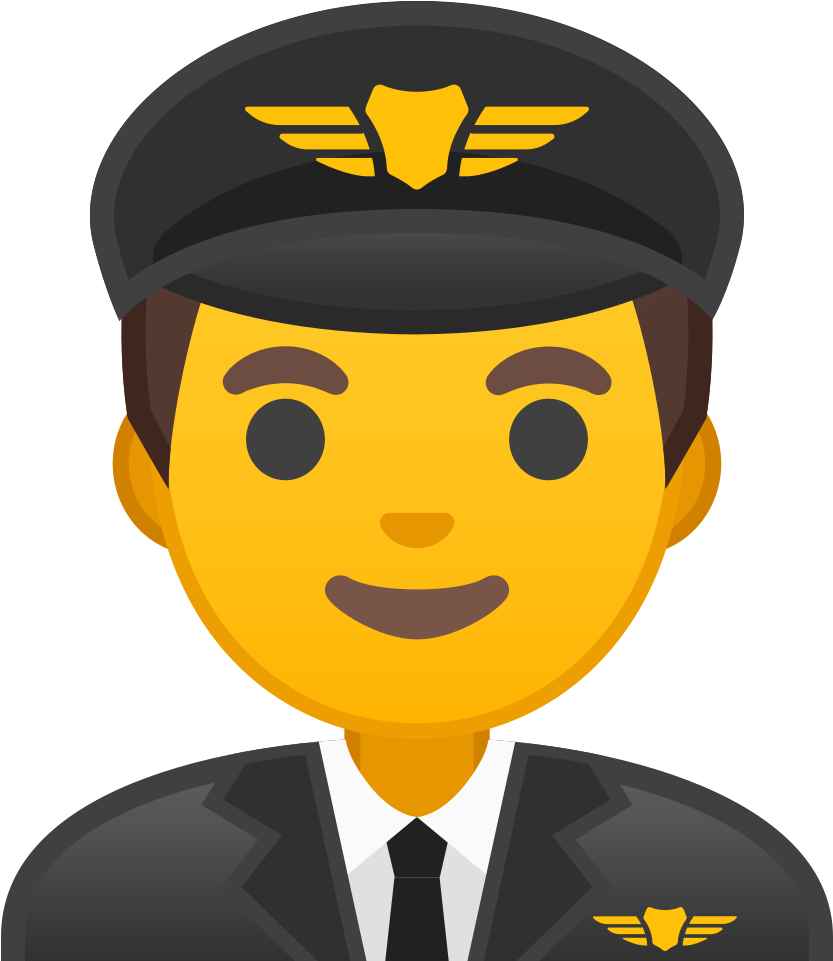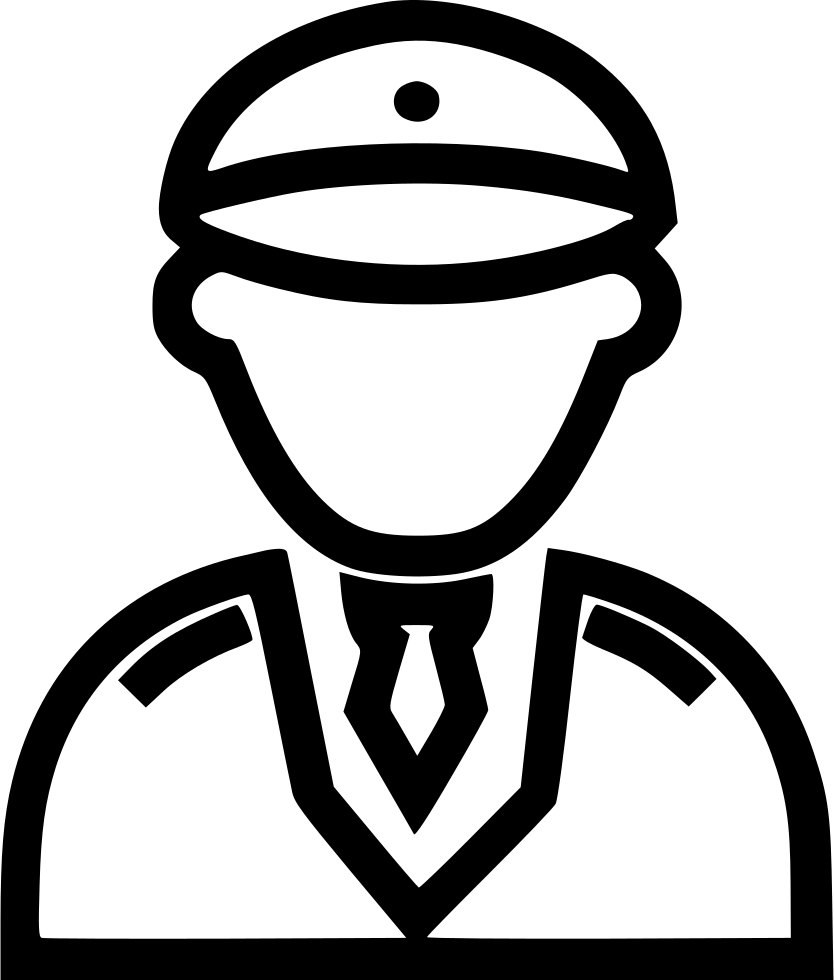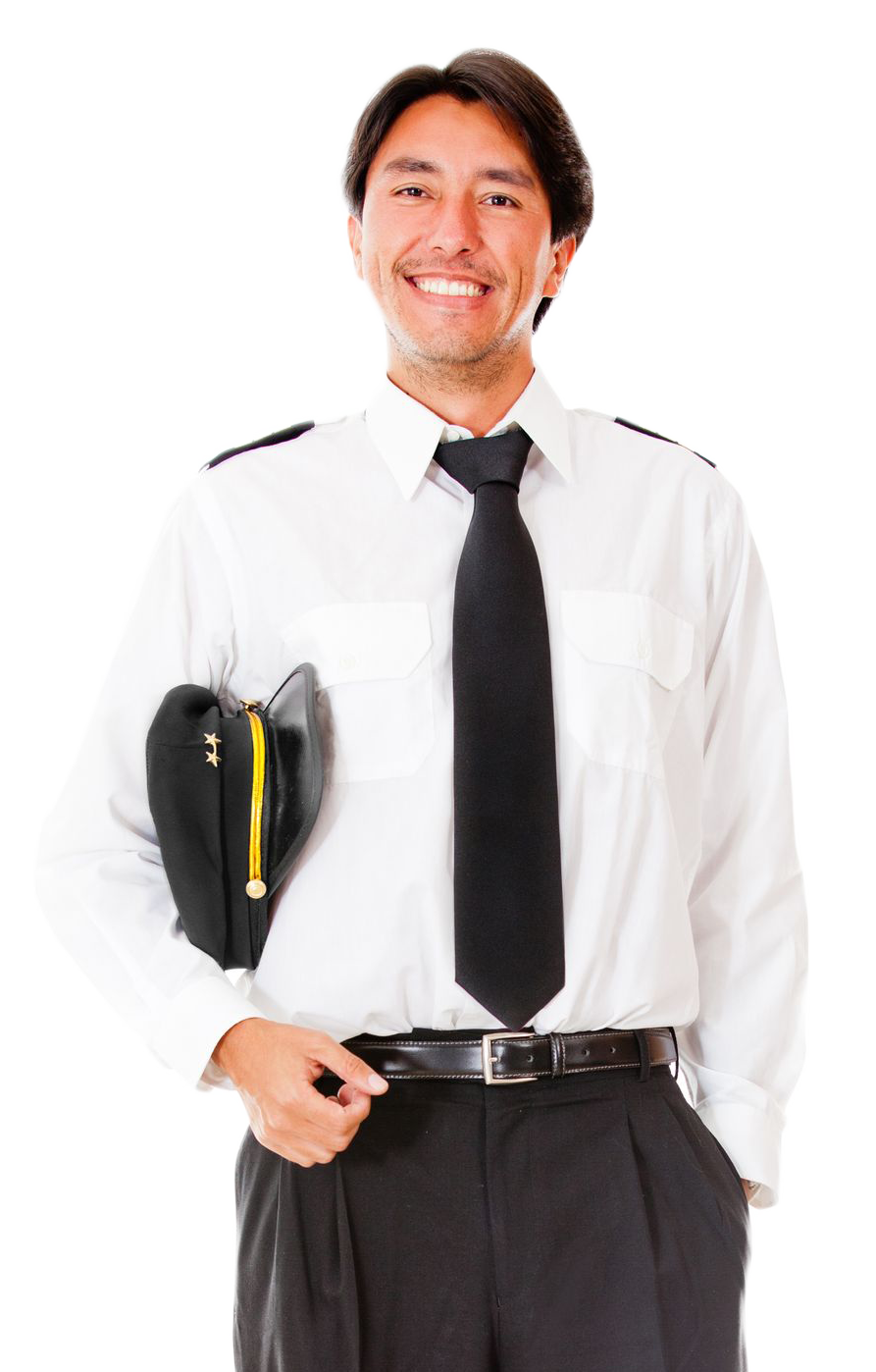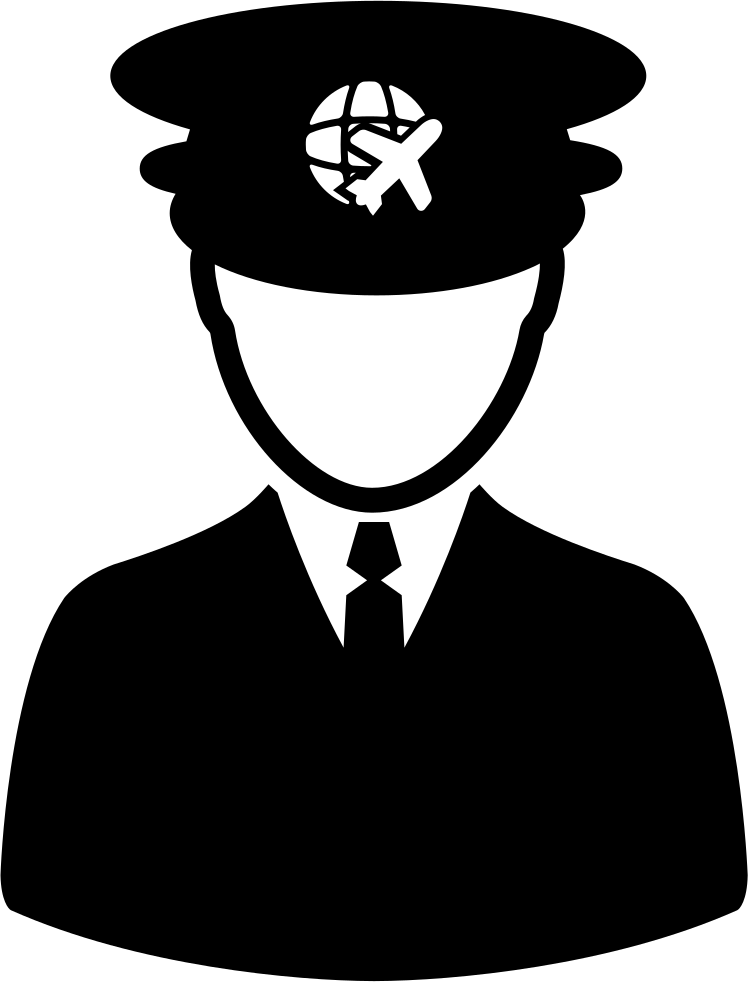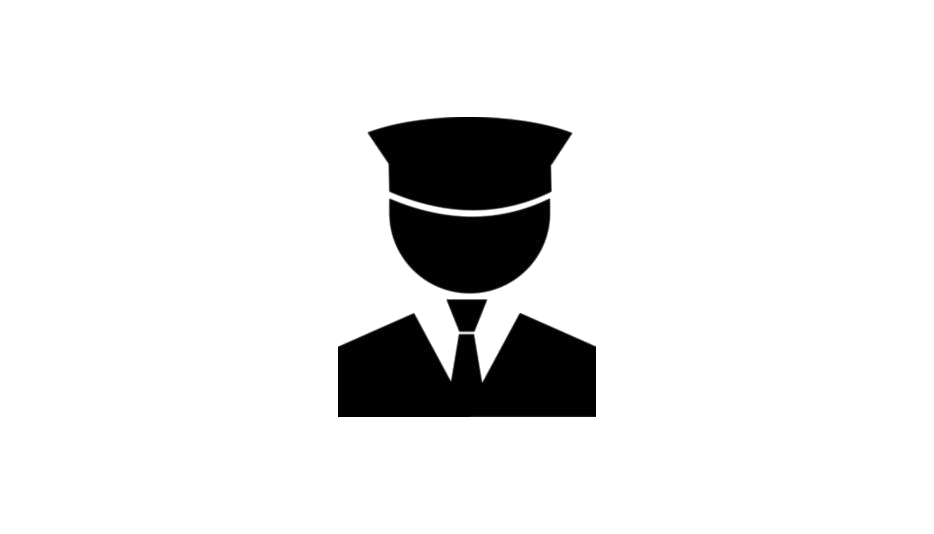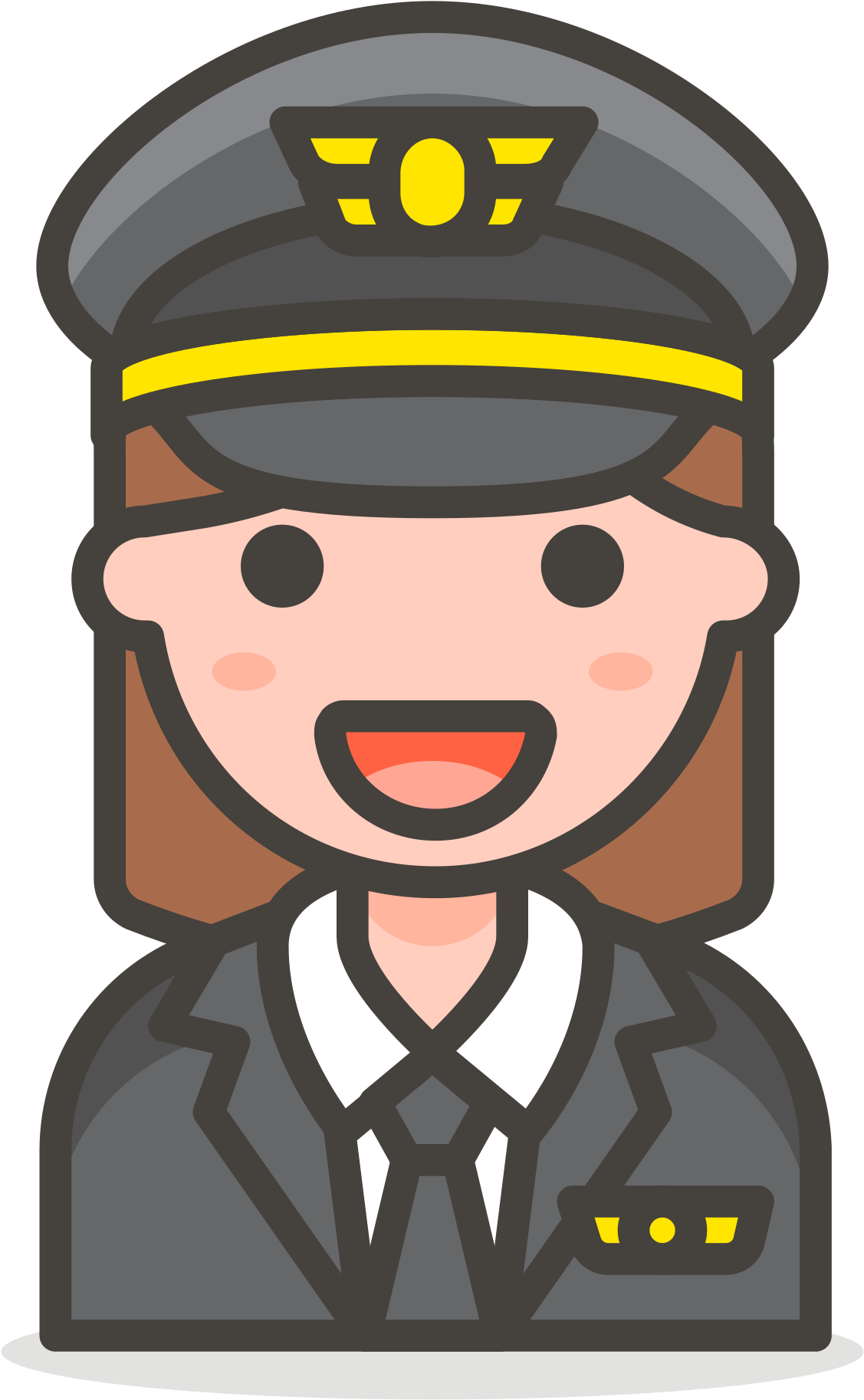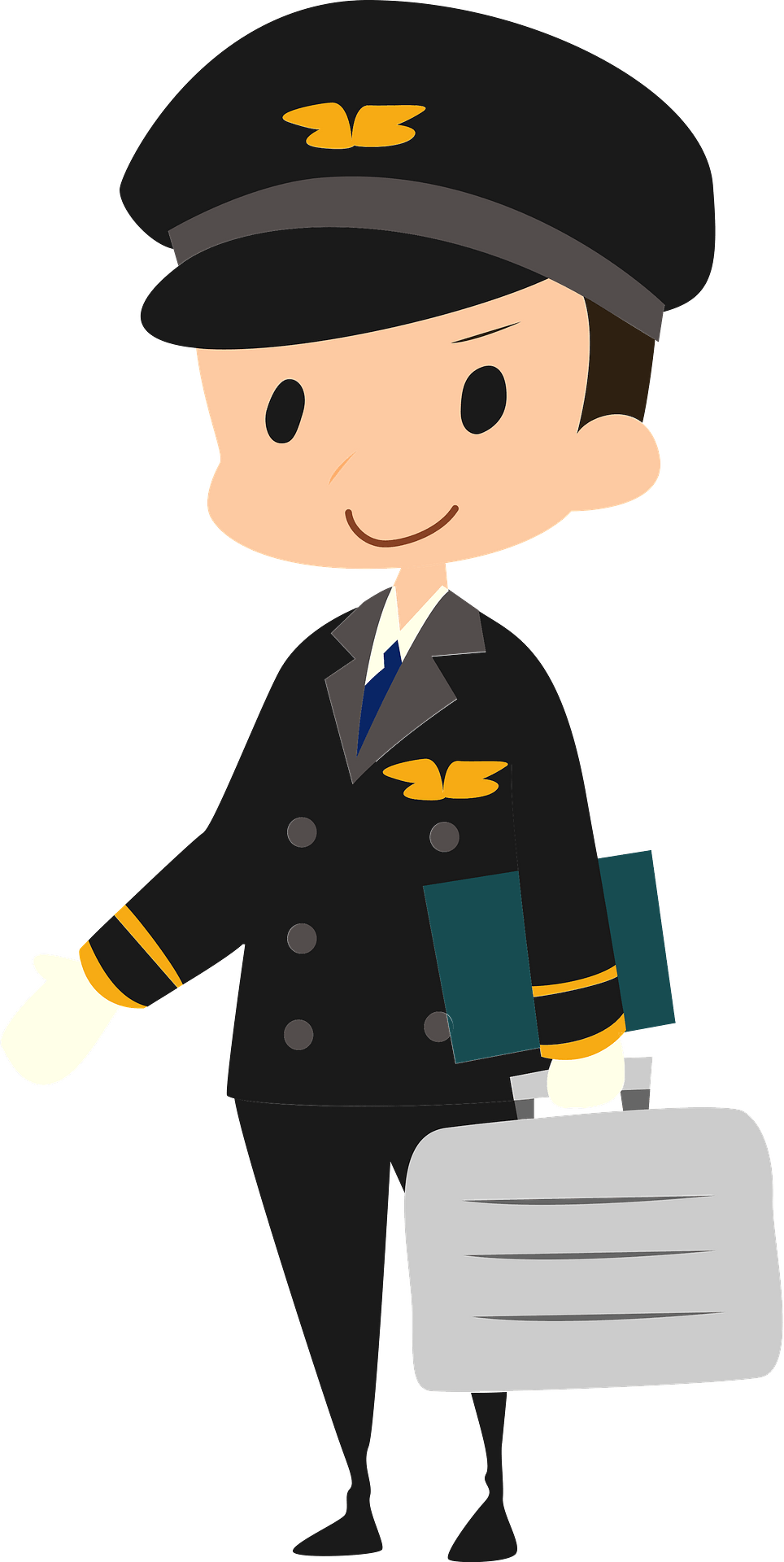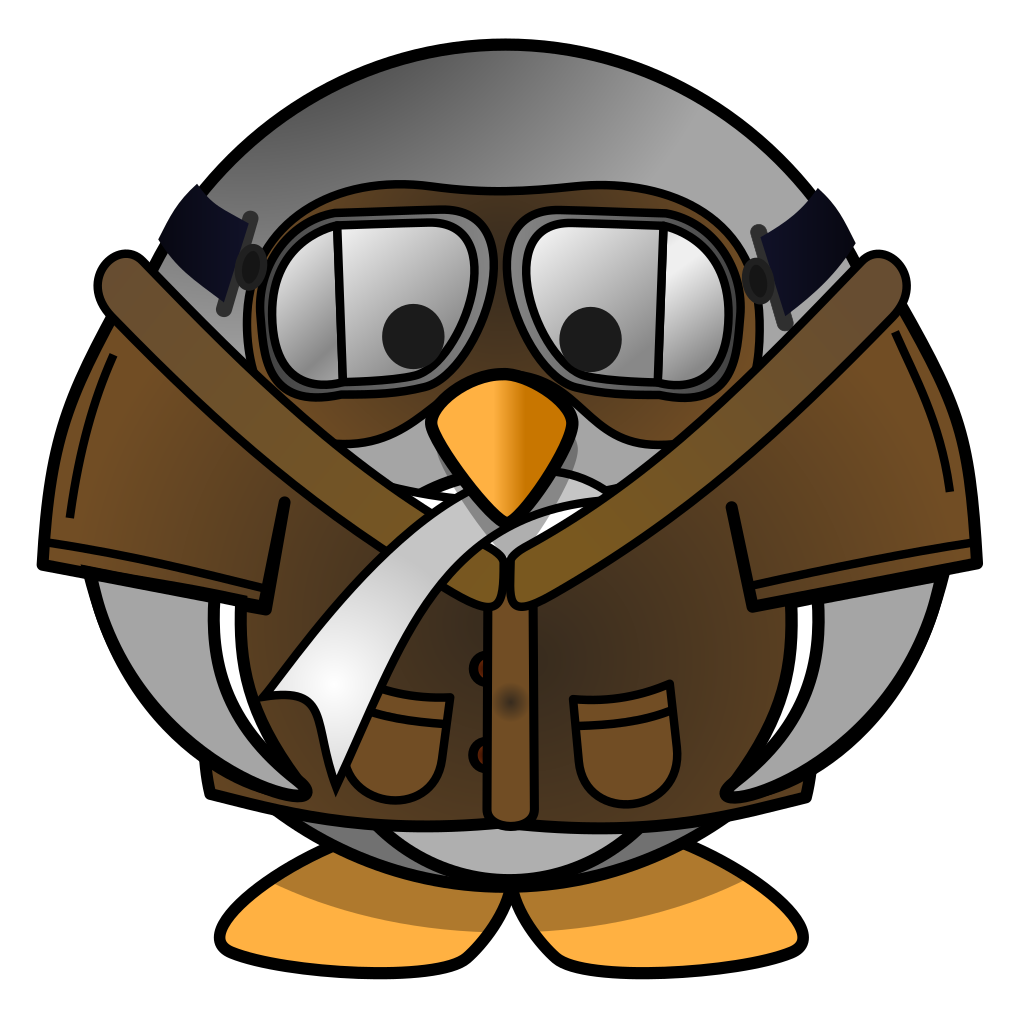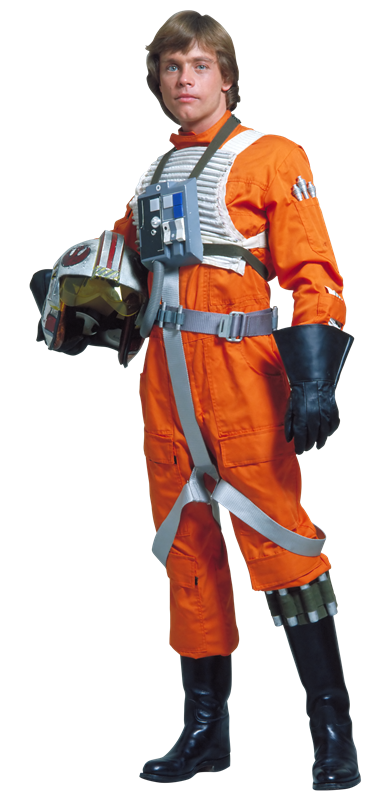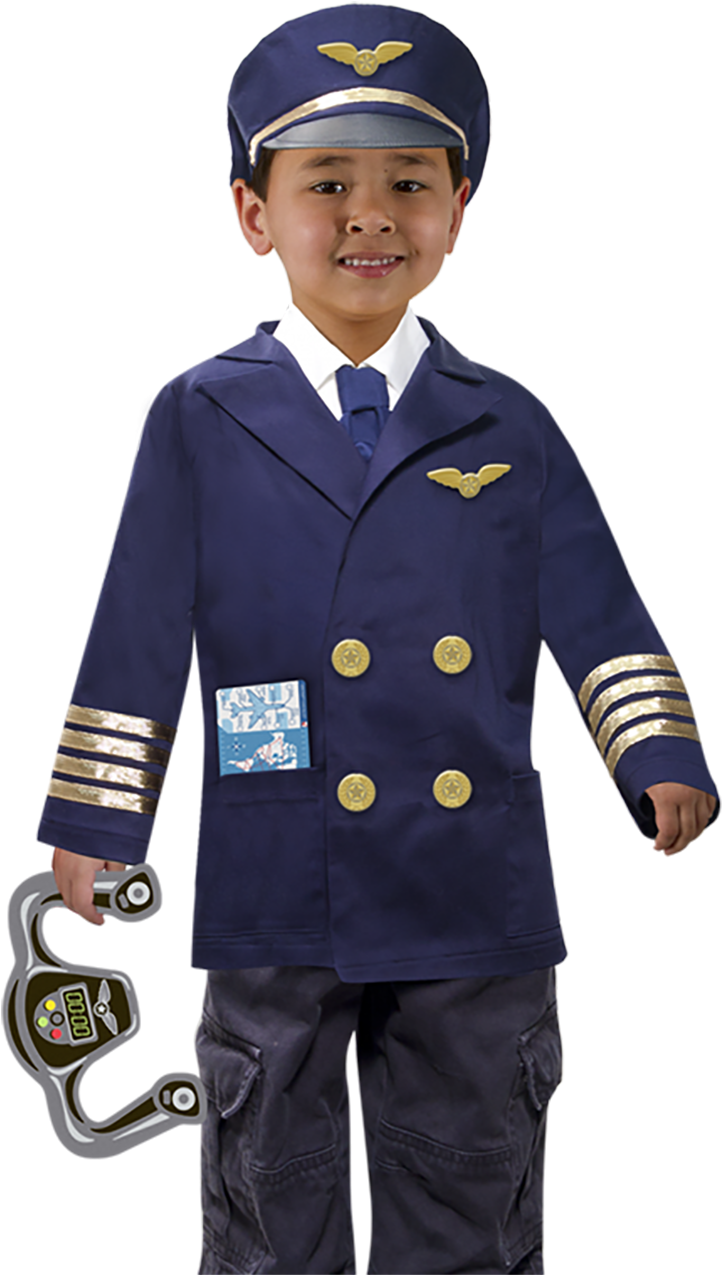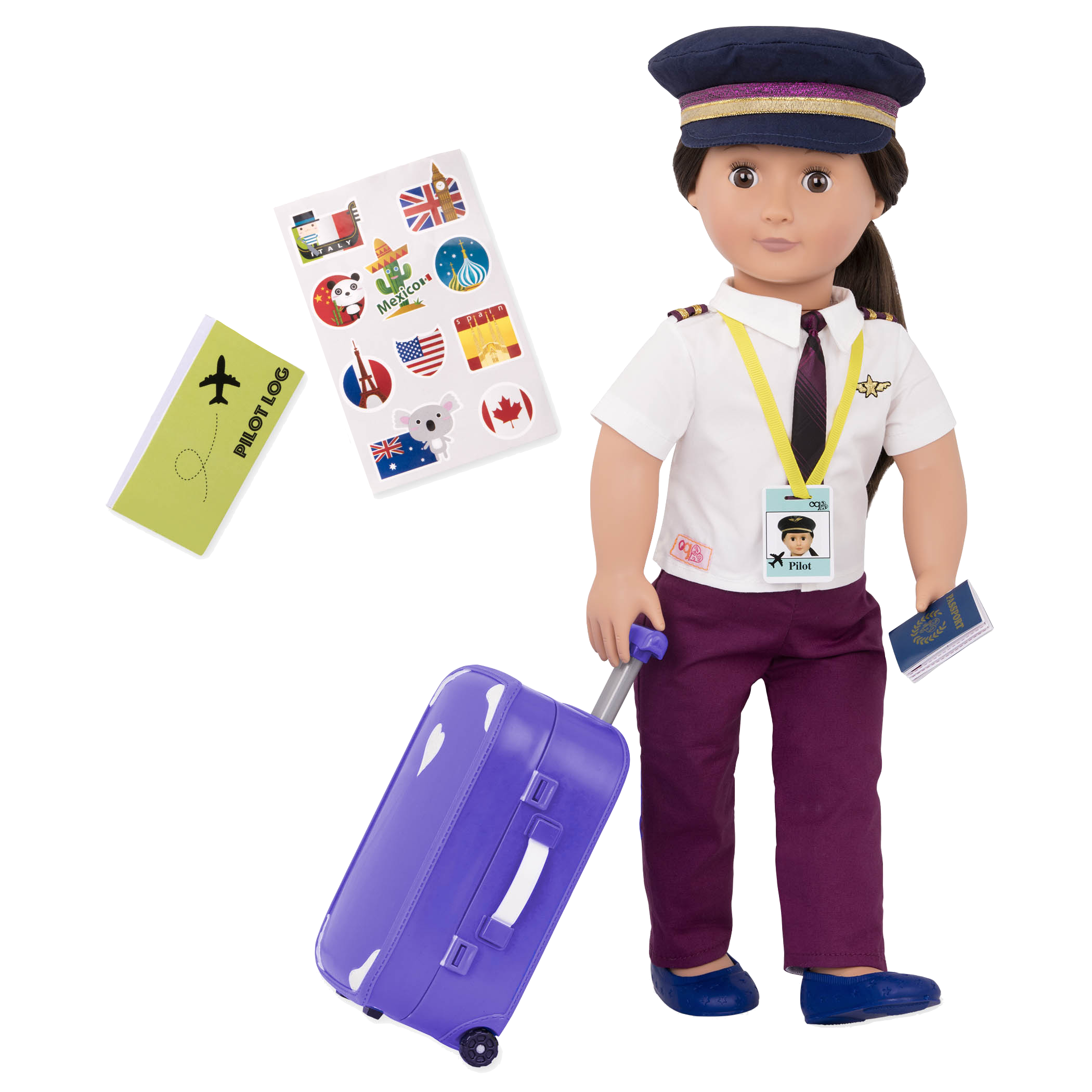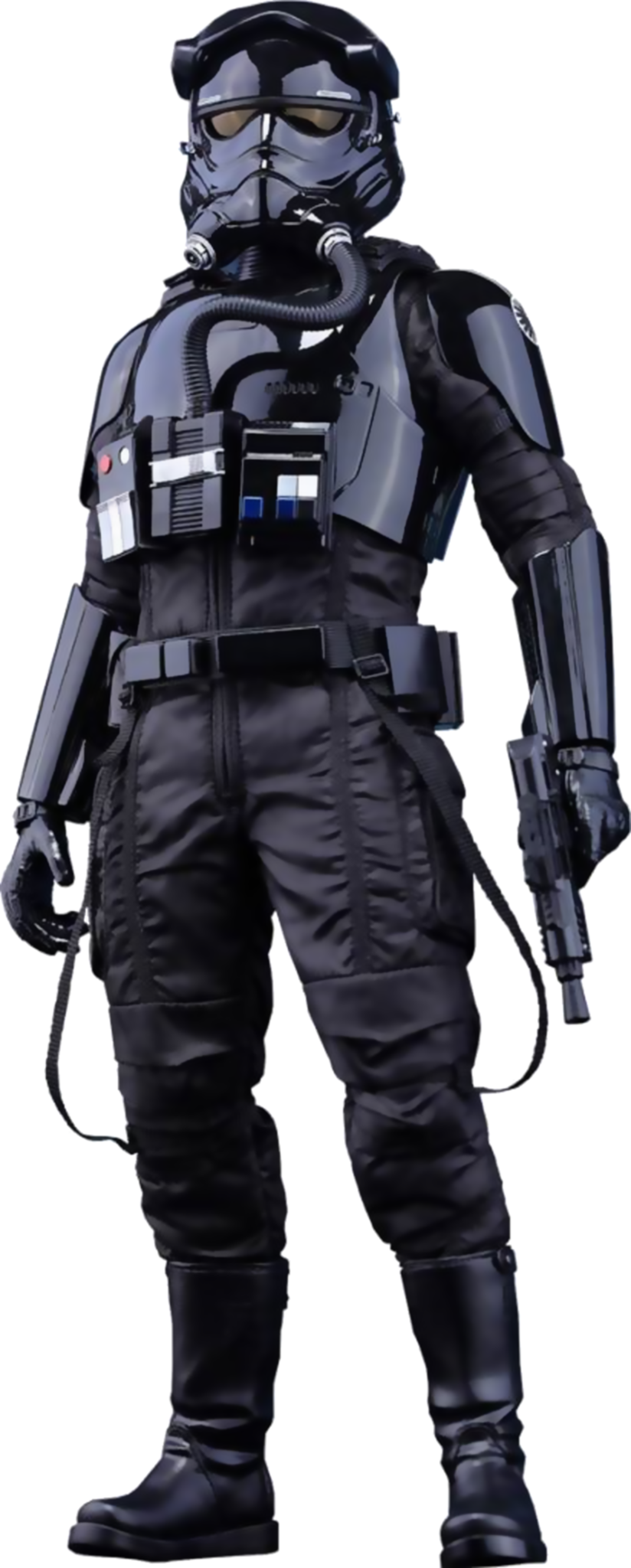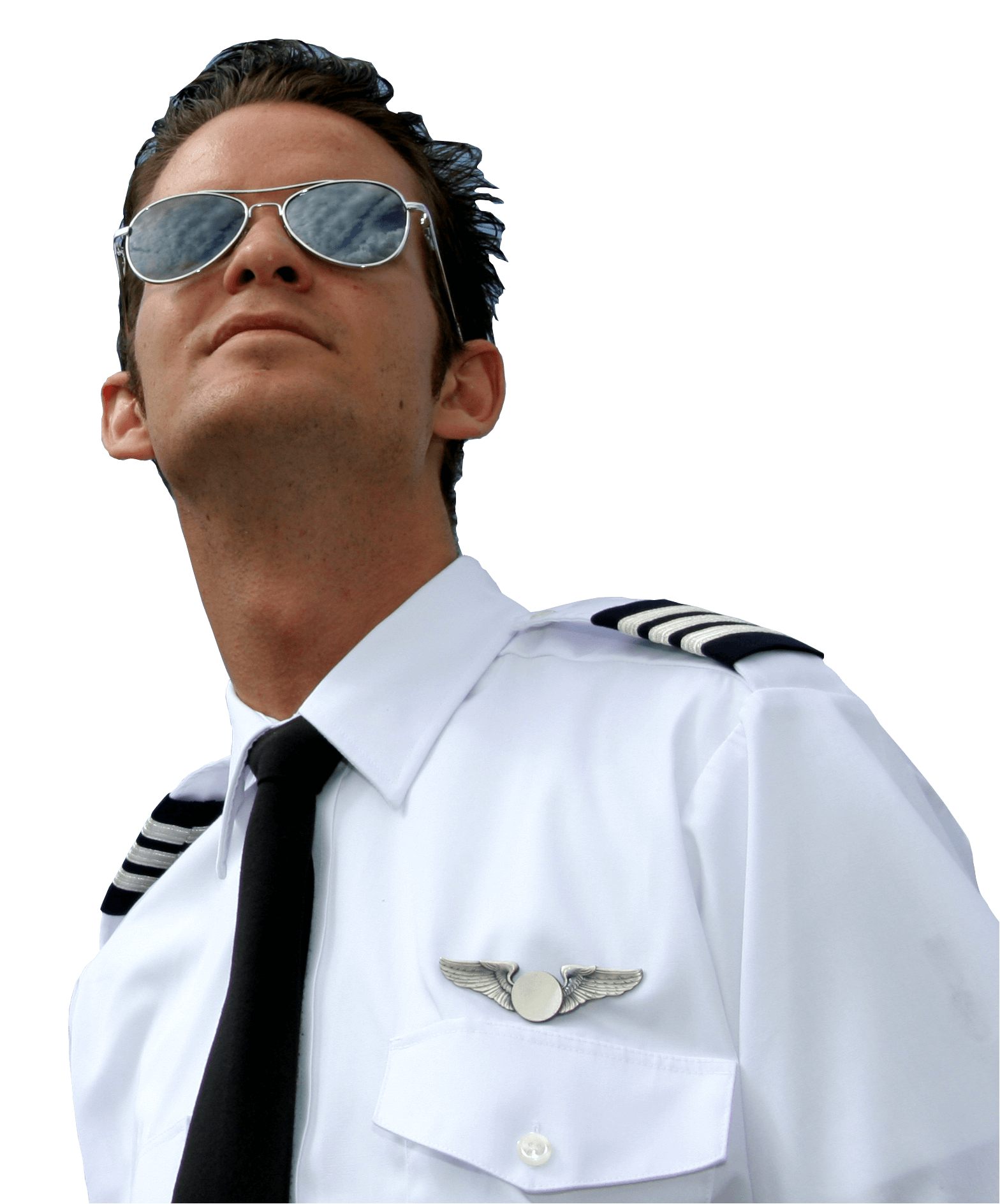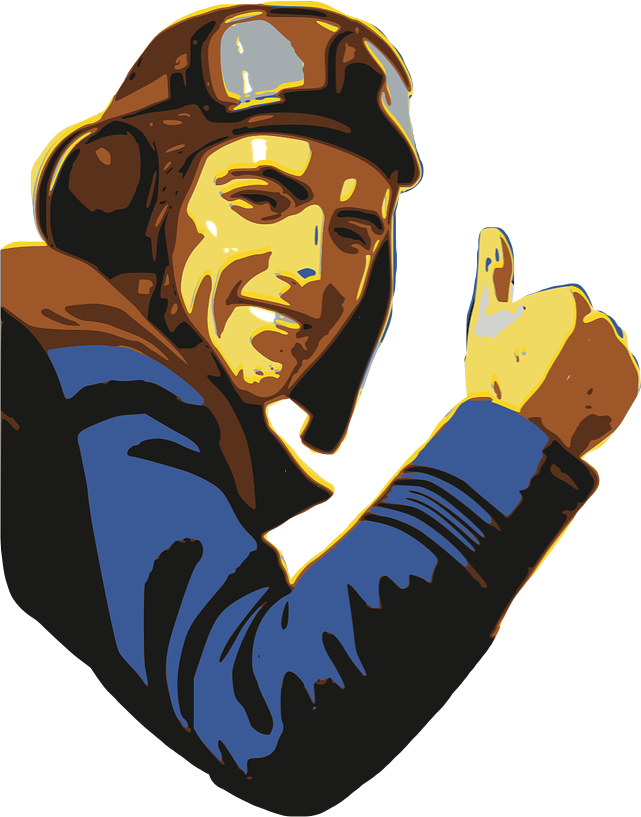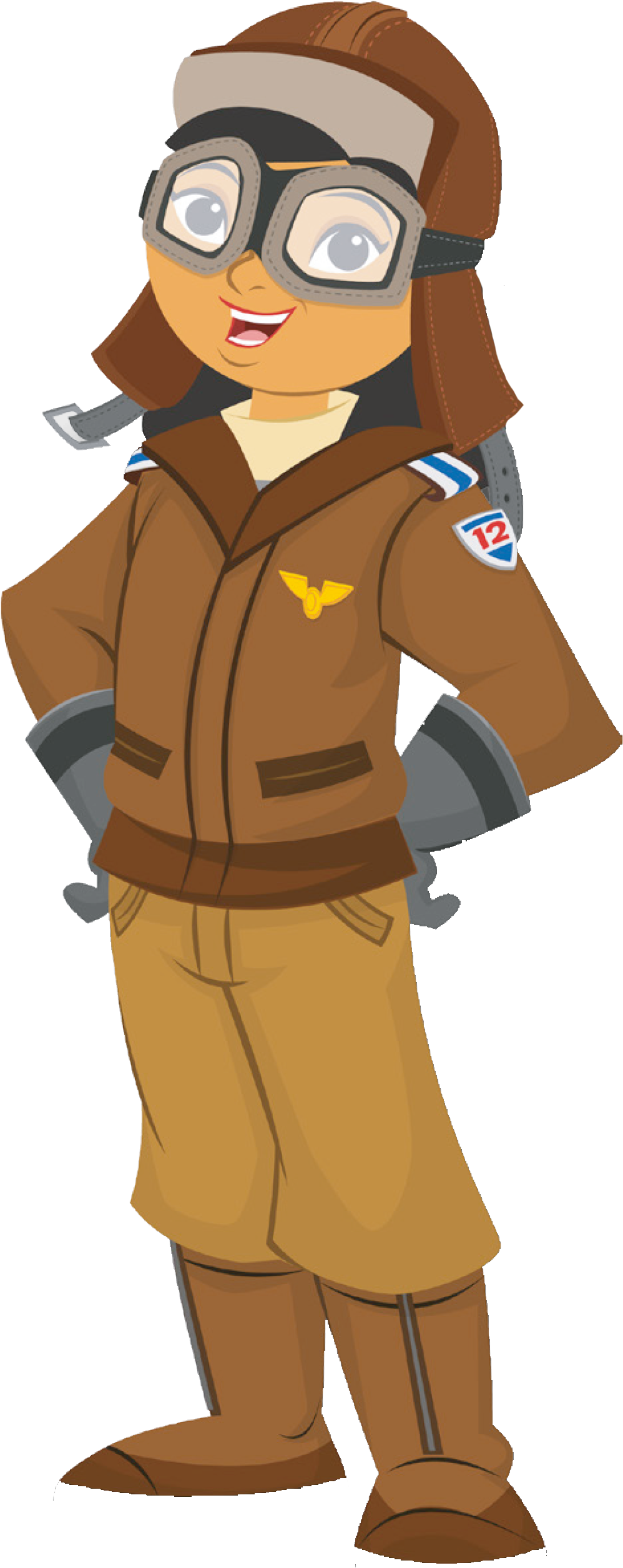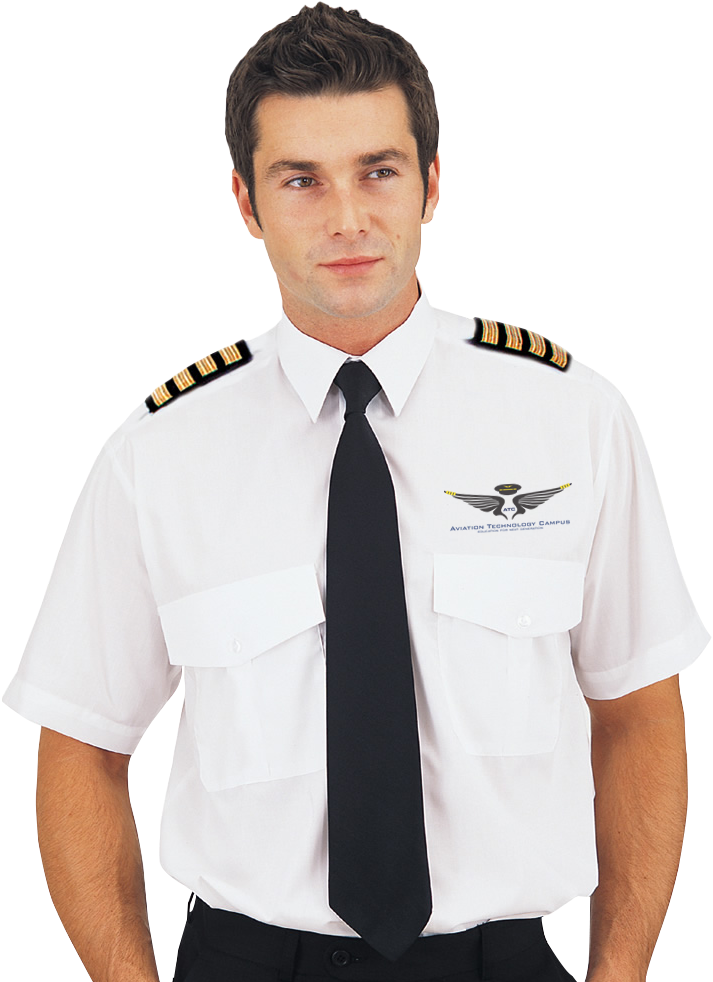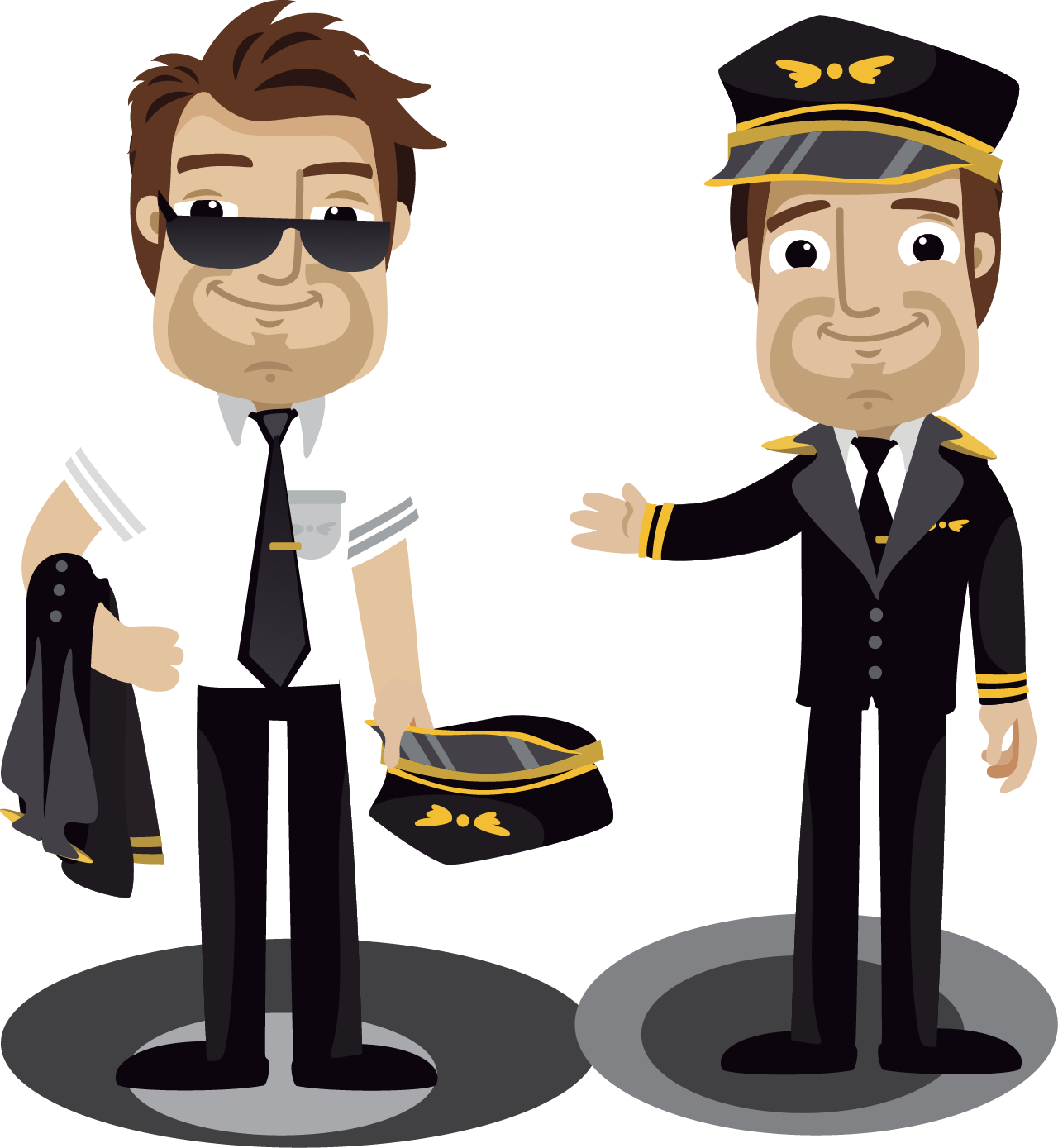Download top and best high-quality free Pilot PNG Transparent Images backgrounds available in various sizes. To view the full PNG size resolution click on any of the below image thumbnail.
License Info: Creative Commons 4.0 BY-NC
An aircraft pilot, often known as an aviator, is a person who operates the aircraft’s directional flight controls to control its flight. Because they are engaged in controlling the aircraft’s navigation and engine systems, additional aircrew members, such as navigators or flight engineers, are also called aviators. Other members of the aircrew, including drone operators, flight attendants, mechanics, and ground crew, are not considered aviators.
Most armies and several airlines across the globe issue aviator badges to their pilots in honor of their credentials and duties.
The term aviator (aviateur in French) was first used in 1887 as a variant of “aviation,” which was created in 1863 by G. de la Landelle in Aviation Ou Navigation A├⌐rienne (“Aviation or Air Navigation”). The name aviatrix (aviatrice in French) was once used to refer to a female aviator, although it is now considered obsolete. These phrases were more commonly used in the early days of aviation, when planes were exceedingly scarce, and they meant courage and adventure. “The weight, including the body of the aviator, is a little more than 700 pounds,” a 1905 reference book said of the Wright brothers’ first airplane.
Early aviation rapidly demanded that aircraft be under the operational direction of a fully qualified, certified pilot at all times, who is responsible for the safe and legal completion of the flight. This ensured the safety of persons in the air and on the ground. Louis Blériot received the first certificate from the Aéro-Club de France in 1908, followed by Glenn Curtiss, Léon Delagrange, and Robert Esnault-Pelterie. In 1910, the Royal Aero Club of Great Britain was founded, followed by the Aero Club of America in 1911. (Glenn Curtiss receiving the first).
Civilian pilots fly a variety of aircraft for pleasure, charity, or business, as well as for non-scheduled (charter) and scheduled passenger and freight air carriers (airlines), corporate aviation, agricultural (crop dusting, etc.), forest fire suppression, law enforcement, and other purposes. When flying for an airline, pilots are typically referred to as airline pilots, with the captain being the pilot in command.
In 2017, there were 290,000 airline pilots in the globe, and CAE Inc., an aircraft simulator maker, predicts a demand for 255,000 new ones by 2027, with 150,000 for expansion and 105,000 to balance retirement and attrition. 90,000 pilots in Asia-Pacific (average pilot age: 45.8 years in 2016), 85,000 in the Americas (48 years), 50,000 in Europe (43.7 years), and 30,000 in the Middle East and Africa (45.7 years).
Boeing estimates that 790,000 additional pilots will be needed in the next 20 years, with 635,000 for commercial aircraft, 96,000 for business aviation, and 59,000 for helicopters: 33% in Asia Pacific (261,000), 26% in North America (206,000), 18% in Europe (146,000), 8% in the Middle East (64,000), 7% in Latin America (57,000), 4% in Africa (29,000), and 3% in Russia/Central Asia (27,000). Some pilots were quitting business aviation to return to airlines by November 2017, owing to a scarcity of trained pilots.
A Global 6000 pilot, for example, who earned $250,000 per year for 10 to 15 flying hours per month, returned to American Airlines with full seniority. A Gulfstream G650 or Global 6000 pilot’s salary ranges from $245,000 to $265,000, with a recruitment budget of up to $300,000. At the opposite end of the scale, several small carriers recruit rookie pilots who require 300 hours to move to airlines in a year due to a lack of available pilots. They could also hire non-career pilots with other professions or airline retirees who wish to keep flying.
Download Pilot PNG images transparent gallery.
- Pilot Silhoutte
Resolution: 794 × 980
Size: 66 KB
Image Format: .png
Download
- Pilot Transparent
Resolution: 1918 × 2427
Size: 99 KB
Image Format: .png
Download
- Pilot PNG Clipart
Resolution: 1200 × 1200
Size: 325 KB
Image Format: .png
Download
- Pilot PNG Free Download
Resolution: 683 × 924
Size: 221 KB
Image Format: .png
Download
- Pilot Silhoutte PNG
Resolution: 898 × 980
Size: 61 KB
Image Format: .png
Download
- Pilot Silhoutte PNG Image
Resolution: 836 × 980
Size: 32 KB
Image Format: .png
Download
- Pilot Vector
Resolution: 815 × 938
Size: 66 KB
Image Format: .png
Download
- Pilot Vector PNG
Resolution: 800 × 800
Size: 13 KB
Image Format: .png
Download
- Pilot Silhoutte Transparent
Resolution: 934 × 534
Size: 36 KB
Image Format: .png
Download
- Pilot Silhoutte PNG Clipart
Resolution: 934 × 534
Size: 38 KB
Image Format: .png
Download
- Pilot Vector PNG Image
Resolution: 800 × 800
Size: 15 KB
Image Format: .png
Download
- Pilot Vector Transparent
Resolution: 903 × 821
Size: 39 KB
Image Format: .png
Download
- Pilot Silhouette PNG Free Download
Resolution: 778 × 980
Size: 19 KB
Image Format: .png
Download
- Pilot PNG File
Resolution: 1024 × 1024
Size: 433 KB
Image Format: .png
Download
- Pilot PNG HD Image
Resolution: 934 × 534
Size: 72 KB
Image Format: .png
Download
- Pilot Vector PNG Clipart
Resolution: 1920 × 1920
Size: 107 KB
Image Format: .png
Download
- Pilot PNG Pic
Resolution: 667 × 971
Size: 674 KB
Image Format: .png
Download
- Pilot Vector PNG Free Download
Resolution: 833 × 961
Size: 67 KB
Image Format: .png
Download
- Pilot Silhoutte PNG Picture
Resolution: 834 × 980
Size: 41 KB
Image Format: .png
Download
- Pilot Silhouette PNG Free Image
Resolution: 1800 × 575
Size: 2026 KB
Image Format: .png
Download
- Pilot PNG High Quality Image
Resolution: 893 × 1398
Size: 651 KB
Image Format: .png
Download
- Pilot Silhouette PNG File
Resolution: 748 × 982
Size: 50 KB
Image Format: .png
Download
- Pilot Silhoutte PNG HD Image
Resolution: 934 × 534
Size: 32 KB
Image Format: .png
Download
- Pilot PNG Images
Resolution: 1127 × 1827
Size: 134 KB
Image Format: .png
Download
- Pilot PNG Image File
Resolution: 964 × 1920
Size: 68 KB
Image Format: .png
Download
- Pilot Vector PNG Picture
Resolution: 1024 × 1024
Size: 174 KB
Image Format: .png
Download
- Pilot PNG Photo
Resolution: 390 × 800
Size: 355 KB
Image Format: .png
Download
- Pilot
Resolution: 722 × 1275
Size: 975 KB
Image Format: .png
Download
- Pilot PNG Picture
Resolution: 2100 × 2100
Size: 1906 KB
Image Format: .png
Download
- Pilot PNG Free Image
Resolution: 824 × 2048
Size: 1630 KB
Image Format: .png
Download
- Pilot PNG Download Image
Resolution: 1568 × 1888
Size: 562 KB
Image Format: .png
Download
- Pilot PNG Image HD
Resolution: 641 × 817
Size: 278 KB
Image Format: .png
Download
- Pilot PNG File Download Free
Resolution: 998 × 2512
Size: 1255 KB
Image Format: .png
Download
- Pilot PNG Transparent HD Photo
Resolution: 713 × 982
Size: 589 KB
Image Format: .png
Download
- Pilot PNG
Resolution: 782 × 798
Size: 227 KB
Image Format: .png
Download
- Pilot PNG Image
Resolution: 1280 × 1389
Size: 165 KB
Image Format: .png
Download


